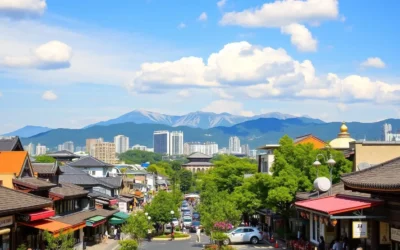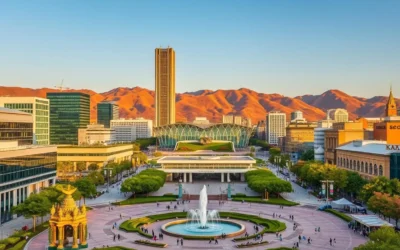When you think of South Korea, its vibrant culture and rich history likely come to mind. At the heart of this fascinating nation lies its official language, Korean. This unique language is the only one spoken across the peninsula.
The Korean language is more than just a means of communication; it’s a window into the country’s soul. As you explore South Gyeongsang Province, you’ll discover the fascinating linguistic landscape of this culturally rich region.
The standard Korean dialect, rooted in Seoul, coexists with the distinctive local dialect in this southeastern province. You’ll gain insights into how language shapes cultural identity and understand the historical factors that have influenced language development.
Overview of South Korea’s Linguistic Landscape
As you explore South Korea, you’ll discover a complex linguistic landscape. The country’s language profile is a fascinating blend of unity and diversity, with one official language binding the nation together while regional dialects add layers of complexity.
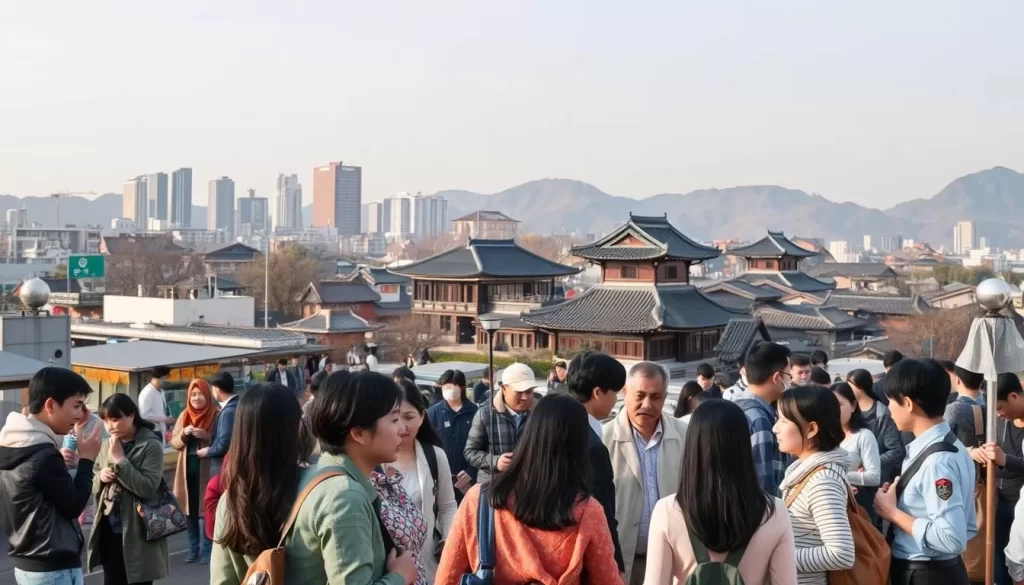
Key Statistics and Demographics
South Korea’s linguistic demographics reveal a predominantly homogeneous language environment. Over 97% of the population is connected to modern digital trends, with the standard dialect from Seoul dominating media and education. Key statistics include:
- High literacy rates across the country
- Prevalence of Standard Korean in formal settings
- Regional dialects preserving local identities
This blend of modern connectivity and traditional dialects creates a unique linguistic profile.
Cultural Significance of Language in Korean Society
Language plays a crucial role in Korean society, serving as both a practical communication tool and a cultural cornerstone. The use of honorifics and formal speech reflects social relationships and hierarchies. Regional vocabulary variations contribute to South Korea’s rich linguistic tapestry, with differences between regions reflecting historical boundaries and cultural distinctions.
You’ll find that people in different regions maintain their linguistic identity while participating in the broader national culture, creating a dynamic balance between unity and diversity.
Historical Development of the Korean Language
As you explore the historical development of the Korean language, you’ll discover a fascinating journey of innovation and cultural pride. The language has undergone significant changes over the centuries, influenced by various historical events and cultural exchanges.
Origins of Hangeul and Hunminjeongeum
The creation of Hangeul, the Korean alphabet, was a pivotal moment in the language’s history. In the 15th century, King Sejong introduced Hangeul through the document Hunminjeongeum, which means “the correct sounds for instructing the people.” This phonetic alphabet was designed to be simple and accessible, consisting of 24 letters that could be easily learned by ordinary people. The introduction of Hangeul marked a significant shift away from the use of Chinese characters, which were complex and limited literacy to the elite.

Evolution Over the Centuries
Over time, the Korean language has evolved significantly, with changes in vocabulary, grammar, and usage. During different historical periods, the language adapted to the political and social circumstances of the time. For example, during the Three Kingdoms era, the language was influenced by the interactions between the various kingdoms and neighboring cultures. Later, during the Japanese occupation, the Korean language was suppressed, but it continued to evolve, incorporating new words and meanings. In the 20th century, standardization efforts helped shape the modern Korean language.
| Historical Period | Key Developments in the Korean Language | Impact on Vocabulary and Grammar |
|---|---|---|
| Three Kingdoms Era | Influence from neighboring cultures and kingdoms | Introduction of new vocabulary |
| 15th Century | Creation of Hangeul by King Sejong | Simplification of writing system, increased literacy |
| Japanese Occupation | Suppression of Korean language, influence of Japanese | Incorporation of Japanese loanwords |
| 20th Century | Standardization efforts | Modernization of vocabulary and grammar |
Regional Dialects and Their Unique Characteristics
As you travel across Korea, from Seoul’s vibrant streets to Jeju’s tranquil landscapes, the diverse dialects reveal the rich tapestry of regional identities. These dialects are more than just variations in accent; they reflect the history, culture, and geography of each area, making them a fascinating aspect of Korean linguistic heritage.
Seoul and Gyeonggi Province: Standard Korean
The Seoul dialect, spoken in the capital city and its surrounding Gyeonggi Province, forms the basis of Standard Korean, or Pyojuneo. This dialect is widely used in media, education, and formal settings, making it the most understood form of the Korean language. About 70% of its vocabulary is adopted as the standard, ensuring that it remains the most intelligible dialect across different regions.
Gangwon, Chungcheong, Jeolla, and Gyeongsang Dialects
Beyond the Seoul dialect, other regions have their unique dialects. The Gangwon dialect is known for its distinct pronunciation patterns and vocabulary differences from Standard Korean. The Chungcheong dialect is characterized by its slower speech rhythm and specific regional expressions. The Jeolla dialect is renowned for its melodic qualities, differing significantly from other regional speech patterns. The Gyeongsang dialect, spoken in South Gyeongsang Province, features a distinctive pitch accent and unique pronunciation features.
| Dialect | Region | Unique Characteristics |
|---|---|---|
| Gangwon | Gangwon Province | Distinct pronunciation, vocabulary differences |
| Chungcheong | Chungcheong Province | Slower speech rhythm, regional expressions |
| Jeolla | Jeolla Province | Melodic qualities, distinct speech patterns |
| Gyeongsang | South Gyeongsang Province | Pitch accent, unique pronunciation |
Jeju: A Distinct Dialect Identity
The Jeju dialect is so unique that it is sometimes considered a separate language. Recognized as critically endangered by UNESCO, it is primarily spoken by the older generation. The Jeju dialect stands apart from mainland Korean varieties due to its distinct grammatical structures and vocabulary, reflecting Jeju’s historical and cultural isolation.
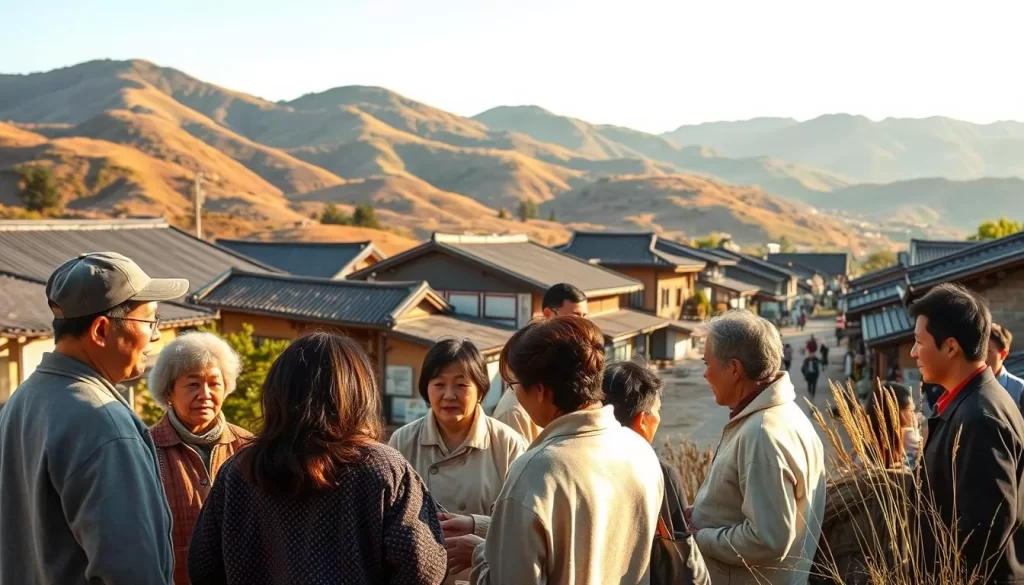
Cultural and Social Influences on the Korean Language
You might be surprised at how much cultural and social factors influence the way Koreans communicate daily. The Korean language is shaped by a complex interplay of traditional customs, superstitions, and modern cultural phenomena.
Traditional Customs and Superstitions
Many traditional customs and superstitions are embedded in everyday language. For example, the number four is often avoided because it sounds like the word for death. This affects people‘s choices for addresses, floors, and gifts. Additionally, seasonal and holiday-specific terms reflect Korea’s traditional calendar and celebrations, enriching the language with cultural depth.
K-pop, Dramas, and Global Cultural Impact
The global rise of K-pop and Korean dramas has introduced new terms and expressions into the language. Phrases like “Gangnam Style” have become worldwide phenomena, illustrating how culture and media can influence language. This cultural export has not only popularized certain words and phrases but also created new linguistic innovations, reflecting the dynamic nature of the Korean language.
Official Language and Government Initiatives in South Korea
Government initiatives are crucial in maintaining the integrity and widespread use of the Korean language. In South Korea, the official language is a cornerstone of national identity and communication. The government has implemented several initiatives to ensure its standardization and widespread use across various settings.
National Institute of Korean Language
The National Institute of Korean Language is at the forefront of these efforts. Established to manage and promote the official language, it oversees the development of language policies and standards. A key publication is the Standard Lexicon, which contains over 1.1 million entries, providing a comprehensive guide to standard Korean vocabulary. The institute’s work ensures consistency in language usage across educational and public settings.
TOPIK and Language Proficiency Standards
Another significant initiative is the Test of Proficiency in Korean (TOPIK), which has established benchmarks for language learning and assessment both domestically and internationally. TOPIK evaluates an individual’s ability to use Korean effectively in various contexts, promoting a standardized level of language proficiency.
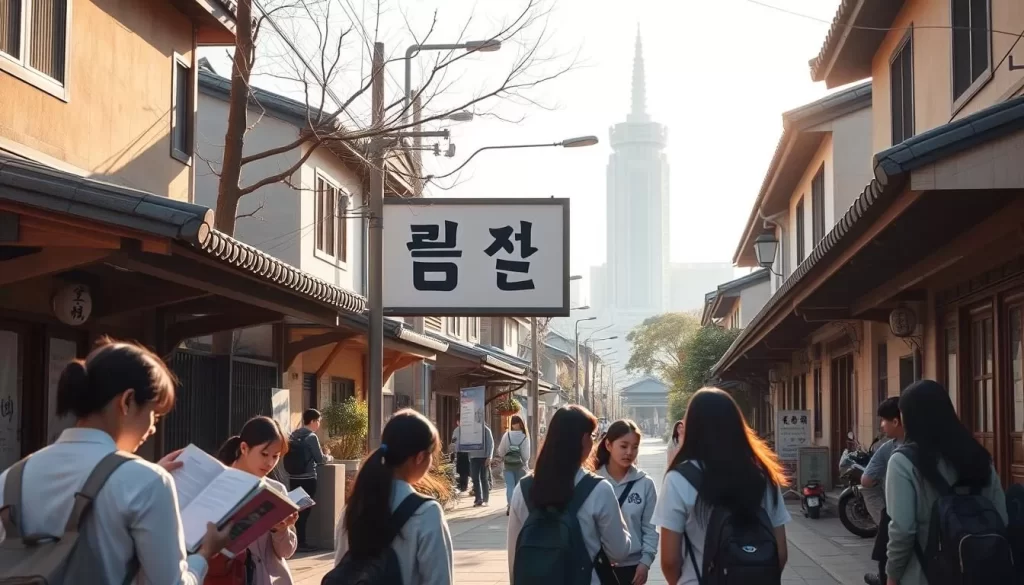
The government’s efforts to standardize the language have a direct impact on education, media, and public communication. By maintaining a standard dialect, the government ensures that communication is clear and effective across different regions. The following table illustrates the structure of TOPIK and its levels:
| Level | Description |
|---|---|
| Beginner | Basic understanding and usage of Korean |
| Intermediate | Ability to use Korean in everyday situations |
| Advanced | Complex understanding and usage, suitable for academic and professional contexts |
By standardizing the Korean language and promoting its correct usage, the South Korean government supports national unity and effective communication.
Comparing South and North Korean Language Variants
You might be surprised to learn how the separation of North and South Korea has influenced their languages. Despite sharing a common origin, the Korean language has evolved differently in the two regions since the Korean War in the 1950s.
Mutual Intelligibility and Regional Accents
Although the language variants in South and North Korea have developed distinct characteristics, they remain mutually intelligible. Speakers from both regions can generally understand each other, though nuances may require clarification. Regional accents also play a significant role, with different parts of the peninsula having unique pronunciation and intonation patterns. For instance, the accent in South Korea’s Gyeongsang Province is distinct and can be quite different from the standard Seoul dialect.
Differences in Foreign Loanwords and Vocabulary
The differences in vocabulary between South and North Korea are largely due to varying foreign influences. South Korea has adopted many English loanwords, such as “myujikeol” for “musical.” In contrast, North Korea uses terms influenced by Russian and Chinese, like “eumhakwi” for the same term. This divergence in vocabulary reflects the broader cultural and political separation between the two states. Understanding these differences is crucial for effective communication across the border.
South Gyeongsang Province, South Korea: Official and widely spoken languages
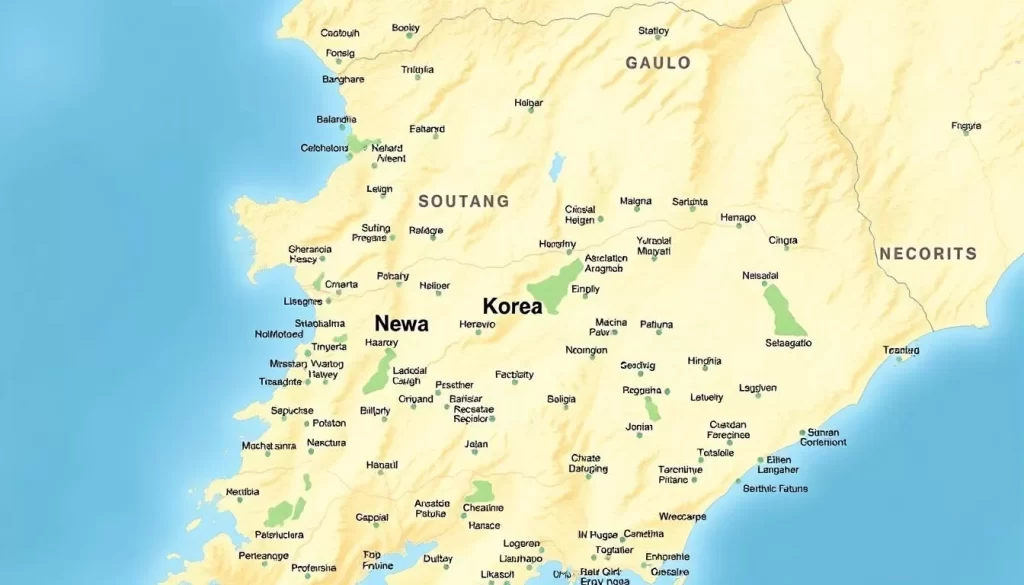
The province of South Gyeongsang in South Korea is home to a diverse linguistic heritage, with both standard and regional dialects playing significant roles. You will gain a detailed understanding of the linguistic landscape, including the official Standard Korean and the region’s distinctive Gyeongsang dialect.
Standard Korean (Pyojuneo) Explained
Standard Korean, or Pyojuneo, serves as the foundation for education, media, and formal interactions across South Korea. Rooted in the Gyeonggi dialect, it shapes how millions express themselves daily. This standard is used in schools, government offices, and media, ensuring consistency nationwide. For instance, about 70% of the vocabulary from the Gyeonggi dialect is adopted as the standard, making it accessible to all.
You will learn how Standard Korean functions as the official language in South Gyeongsang Province, used in education, government, and formal settings. This understanding will help you appreciate the nuances of Korean communication.
Korean Sign Language and Digital Communication
In addition to spoken languages, Korean Sign Language serves the deaf and hard-of-hearing community in South Gyeongsang Province. You will be introduced to its usage and significance in the region. Moreover, digital communication is influencing language use, with regional-specific digital expressions and trends emerging.
You will discover how residents navigate between Standard Korean and the Gyeongsang dialect depending on context. The section will also explore how the Gyeongsang dialect differs from other regional dialects in South Korea, highlighting its unique features.
The linguistic identity of South Gyeongsang Province is a vital part of the broader tapestry of dialects across South Korea. By understanding the interplay between Standard Korean and local dialects, you will gain insights into the region’s cultural and social fabric.
Impact of Globalization and Modern Media on Korean Communication
As the world becomes increasingly interconnected, the Korean language is undergoing a significant transformation. You are witnessing a shift in how Koreans communicate, driven by globalization and modern media.
The influence of social media and digital technologies is reshaping the Korean language, particularly among younger generations. New linguistic trends are emerging, characterized by the use of abbreviations, emoticons, and platform-specific expressions.
Social Media and Digital Trends in Language Use
Social media platforms have created new avenues for Korean speakers to express themselves. You can see how digital communication patterns are evolving, with a focus on streamlined language and adapted traditional patterns. For example, the use of verbs has become more efficient, and new vocabulary is being introduced through foreign cultural influences.
Preservation of Traditional Language Elements
Despite the rapid changes brought by globalization and digital communication, traditional language elements persist. You will notice efforts to preserve linguistic expressions, such as dialects and cultural phrases, alongside the adoption of new words and expressions. For instance, traditional Korean expressions are still used in formal contexts, while modern slang is used in informal settings.
Conclusion
The journey through the linguistic nuances of South Korea reveals a complex interplay between standardization efforts and regional dialects, shaping the country’s language identity. You’ve gained a comprehensive understanding of South Gyeongsang Province’s linguistic landscape, from the official use of Standard Korean to the distinctive characteristics of the regional Gyeongsang dialect.
The Korean language is a vibrant reflection of the culture and history of the peninsula, with regional dialects adding richness and diversity. Government initiatives, such as TOPIK, play a crucial role in preserving and standardizing the language. As you’ve learned, dialects across South Korea differ in intonation, vocabulary, grammar, and pronunciation patterns, with the Gyeongsang dialect’s distinctive pitch accent being a notable example.
In conclusion, the Korean language continues to evolve, influenced by global media and digital communication, while maintaining its unique identity and cultural heritage. With over 77 million speakers, its global reach underscores its growing importance.
The above is subject to change.
Check back often to TRAVEL.COM for the latest travel tips and deals.

